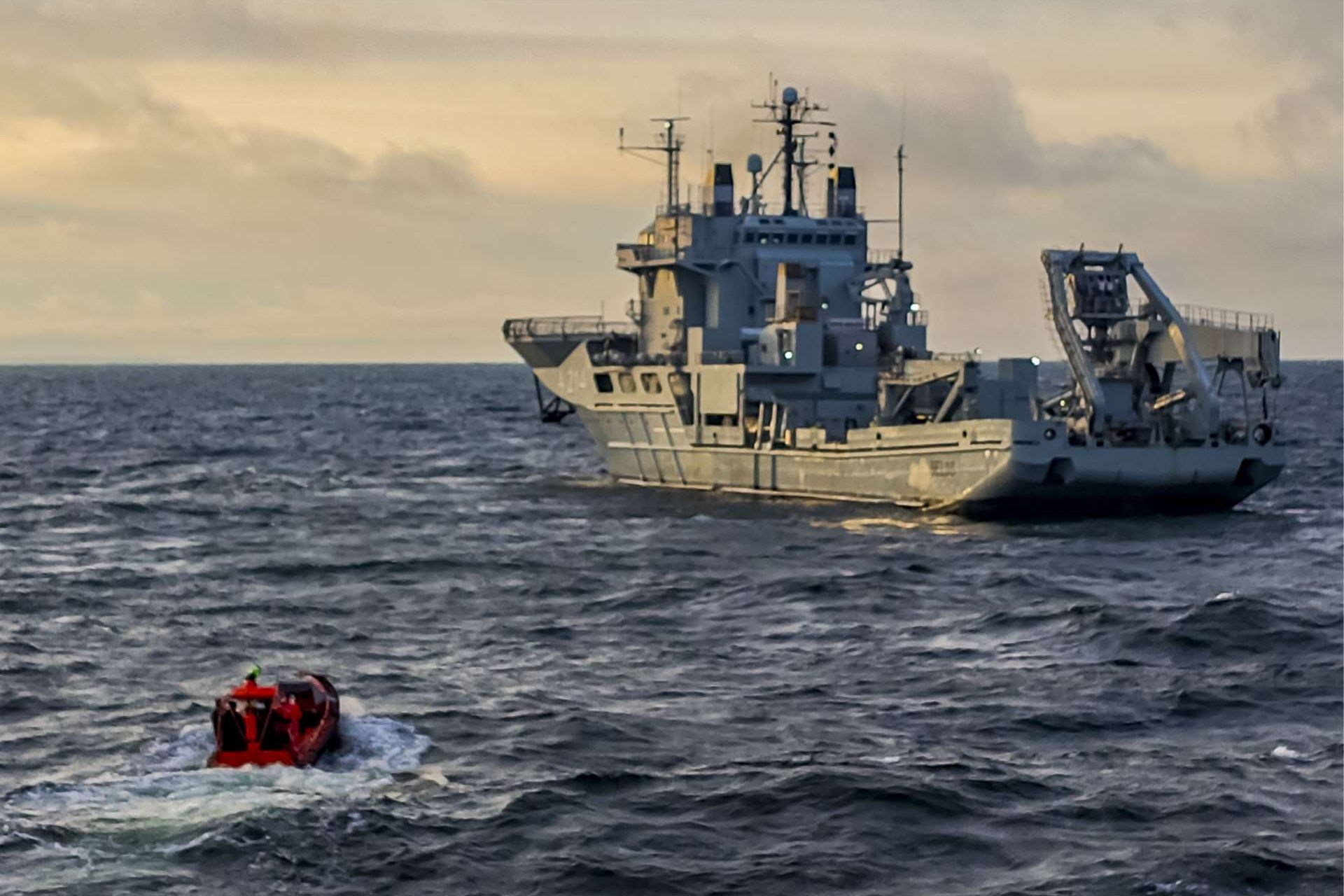Breaking News
Will three new ships deployed by Sweden prevent attacks on underwater infrastructure?.
According to information published by Associated Press on January 12, 2025, Sweden will contribute up to three warships to a NATO-led initiative aimed at enhancing the alliance's presence in the Baltic Sea. The move is part of an effort to guard against potential sabotage of vital underwater infrastructure, the Swedish government announce.
Follow Army Recognition on Google News at this link

Royal Swedish Navy submarine rescue ship HSwMS Belos. (Picture source: Finnish MoD)
In addition to the warships, Sweden’s military will deploy an ASC 890 surveillance aircraft to enhance situational awareness in the region. The Swedish Coast Guard will also play a significant role, with four ships dedicated to monitoring the Baltic Sea and an additional seven vessels on standby for rapid response.
This marks Sweden's first operational contribution to NATO’s defense and deterrence efforts as a member of the alliance. The country formally joined NATO in March, becoming its 32nd member. Sweden's accession followed that of neighboring Finland and was spurred by Russia's full-scale invasion of Ukraine in 2022, which significantly altered the security landscape in Northern Europe.
The decision to strengthen NATO's presence in the Baltic comes amid a series of incidents in the region, raising concerns about possible Russian activities. The Baltic Sea, a crucial economic and strategic corridor, is crisscrossed by undersea cables and pipelines that connect Nordic, Baltic, and Central European nations. These infrastructures facilitate trade, enhance energy security, and, in some cases, reduce reliance on Russian energy resources.
Sweden’s participation in this NATO operation comes at a pivotal moment for the alliance, which has been focusing on fortifying its eastern flank in response to Russia's actions in Ukraine. The Baltic Sea has become a focal point for these efforts, given its strategic location and the vulnerabilities of its underwater infrastructure.
Comments
Monitoring undersea cables in the Baltic Sea is particularly challenging due to the region's unique characteristics and the nature of the threats involved. The Baltic is one of the busiest maritime zones globally, with over 2,000 ships navigating its waters daily, including commercial cargo vessels, oil tankers, and fishing trawlers. This high density of maritime activity creates significant obstacles for identifying vessels that might pose a deliberate or accidental risk to undersea cables. The sheer volume of traffic makes it difficult to discern routine activities from those potentially harmful.
The technological limitations in the detection and surveillance of undersea infrastructure further compound the problem. Current systems struggle to provide real-time monitoring of extensive cable networks, which often span hundreds or thousands of kilometers. The deep-sea environment adds complexity, with cables often lying on the seabed in remote areas that are difficult to access and monitor. Damage to cables can be caused by natural phenomena, such as seabed shifts or underwater currents, but deliberate sabotage, such as anchor dragging or the use of specialized underwater drones, is increasingly suspected. The covert nature of these activities makes attribution particularly difficult, leaving authorities reliant on indirect evidence or post-incident investigations.
Jurisdictional and legal challenges also play a major role. Undersea cables frequently traverse international waters, where no single nation has the authority to enforce protective measures. This limits the ability of individual countries to act decisively against potential threats. Even within territorial waters, enforcement can be difficult due to overlapping national interests and the need for coordination between multiple stakeholders. Moreover, laws governing undersea infrastructure security are often outdated or insufficiently comprehensive, leaving gaps in enforcement and response capabilities.
Adding to these challenges, the Baltic Sea itself poses unique geographical difficulties. Its relatively shallow depths, brackish water, and numerous islands create a complex maritime environment that can obscure monitoring efforts.


























